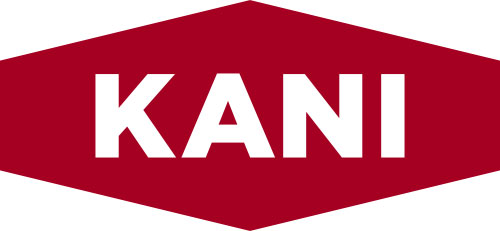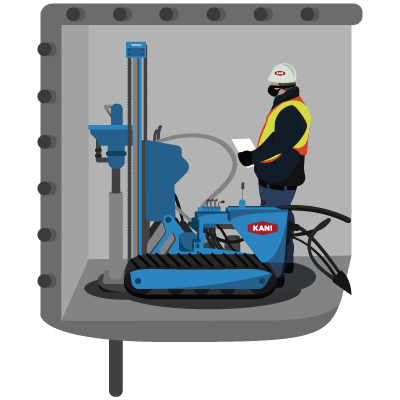ANCHOR INSTALLATIONS
Micropiles
Micropiles are small diameter, high capacity, deep-drilled foundation elements that are used to support new foundations or to underpin existing foundations. The small diameter piles (typically between 3" to 12") are supporting structures that transfer the load from the building to a competent soil or rock layer. Kani's micropile drill rigs allow for flexibility, such as installation in difficult or limited access sites, low headroom sites, and sites with artesian water conditions. This allows for facility upgrades with minimal disruption to normal operations.
Rock and Soil Anchors
Rock and soil anchors are used to provide temporary or permanent structural support and consists of threaded bar assembly and double corrosion protection (DCP), where suitable. Rock anchors have their bond zone bonded to the rock, and generally provide higher bond capacities. Soil anchors can be pressure grouted anchors and are installed in cohesive or non-cohesive soil or loose rock.
Tieback Anchors
Tieback Anchors are used to reinforce and anchor retaining or shoring walls. The tieback anchors can either be self drilled or installed after a hole has been drilled.
TYPES OF GROUND ANCHOR INSTALLATIONS
Prestressed Steel Solid Threadbar
Prestressed bars are hot-rolled, tempered from the rolling heat, stretched and annealed, with a circular cross section. Threadbars feature continuous hot-rolled ribs, which gives the flexibility to thread nuts and couplers for flexibility in bar lengths.
Strand Anchors
Strand anchors are known as one of the strongest, most flexible, and cost-effective anchor systems in the industry. Strand anchors can be used for permanent or temporary tie down or tie back anchors in rock or solid ground. The Kani team was involved in the installation of Canada's largest bundle of strand anchors.
Hollow Bar Anchors
Hollow bar anchors allow for simultaneous drilling and grouting. The hollow core not only serves for flushing with air or water during drilling, but also for grouting the anchor tendon.
Auger Piles
Auger cast piles are installed by rotating a continuously flighted hollow shaft auger into the soil. High strength cement grout is pumped under pressure through the shaft as the auger is slowly withdrawn. Reinforcing steel is added per pile specifications.
Helical Piles
Helical piles are deep foundation elements commonly used to support structures and reinforce foundations. They are constructed using steel shafts with single, double or triple helical flights.
DRILLING
Overburden Drilling
Overburden Drilling is a drilling method whereby drilling is carried out through subsoil and boulders or underwater to and through bedrock. Kani is able to drill 2" to 12" diameter holes in various overburden soils.
Low Headroom
Kani has specialty equipment to allow for drilling in rooms and spaces with low headroom.
Areas with Limited and/or Restricted Access
With Kani's specialty drilling equipment, our team is able to drill in areas with limited or restricted access, like basements, rooms with narrow access, rooms with narrow door openings, and areas with limited spaces.
Deep Hole Drilling (Gravel, Boulders, Rip Rap)
Kani has had experience with deep hole drilling into difficult materials like rolling gravel, large boulders, and rip rap.
Rock Drilling
Rock drilling involves using special machinery designed to drill into and through rocks.
Artesian Conditions
While drilling below ground, flowing artesian conditions can be encountered, which are large underground geological formations that contain and transport groundwater. Kani is experienced in working with artesian conditions.
Deep Hole Instrumentation
Kani has experience with deep hole instrumentation, as many of their projects involve drilling deep holes and require a high level of alignment accuracy to enable the installation of Geotechnical instruments.

